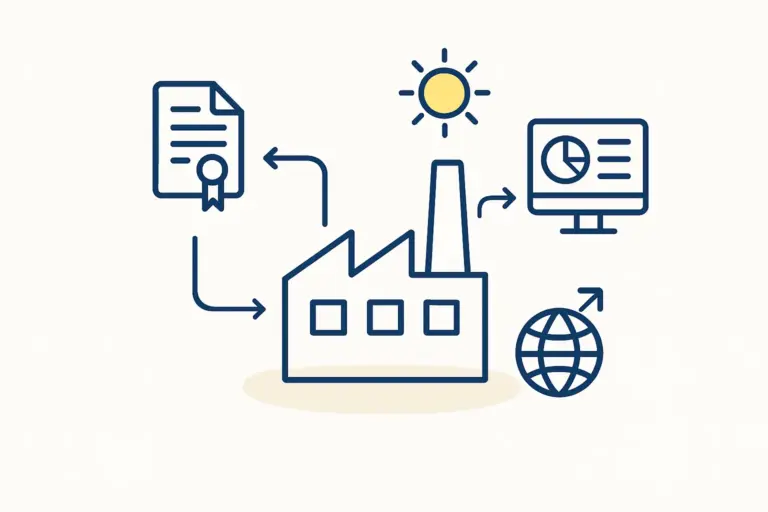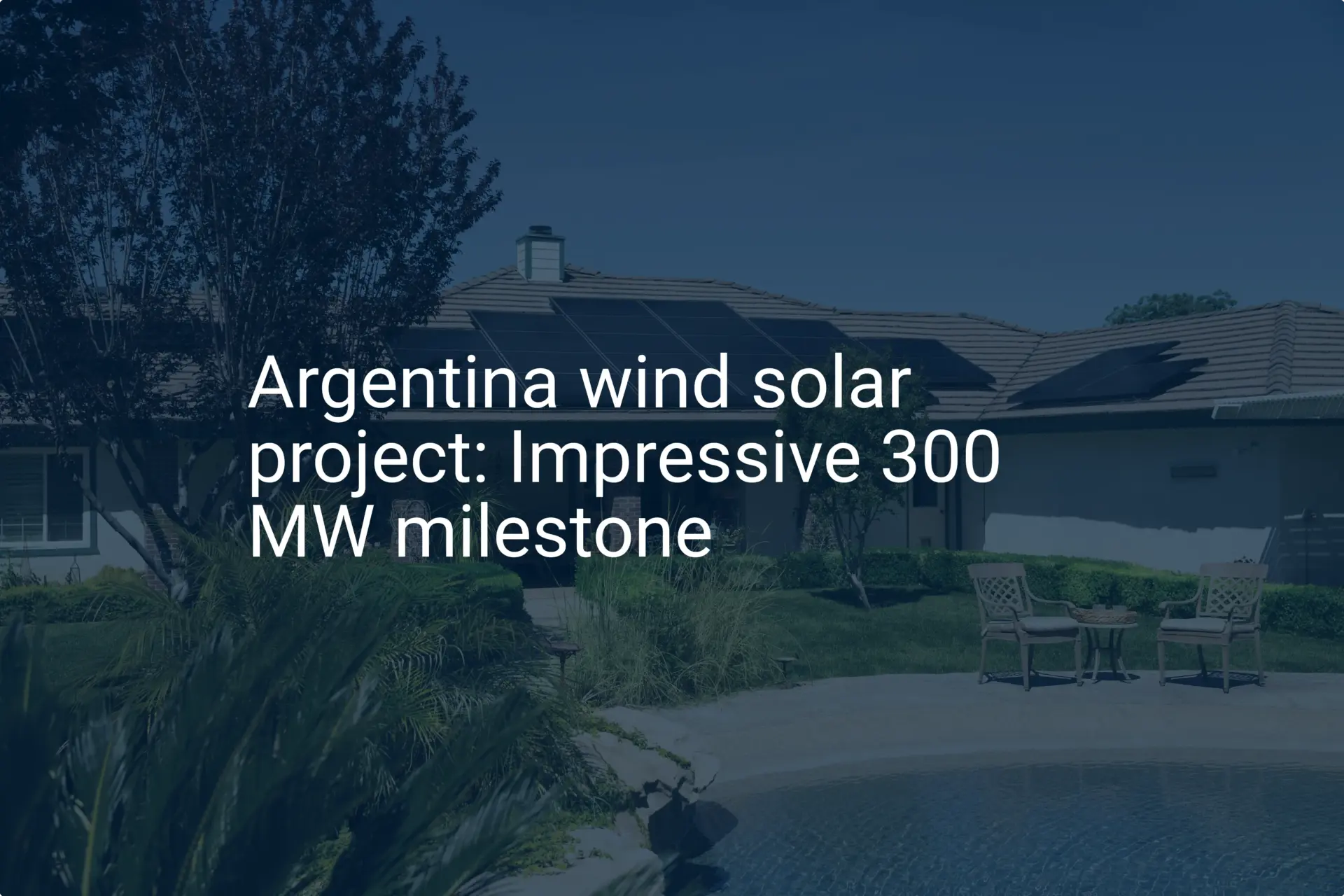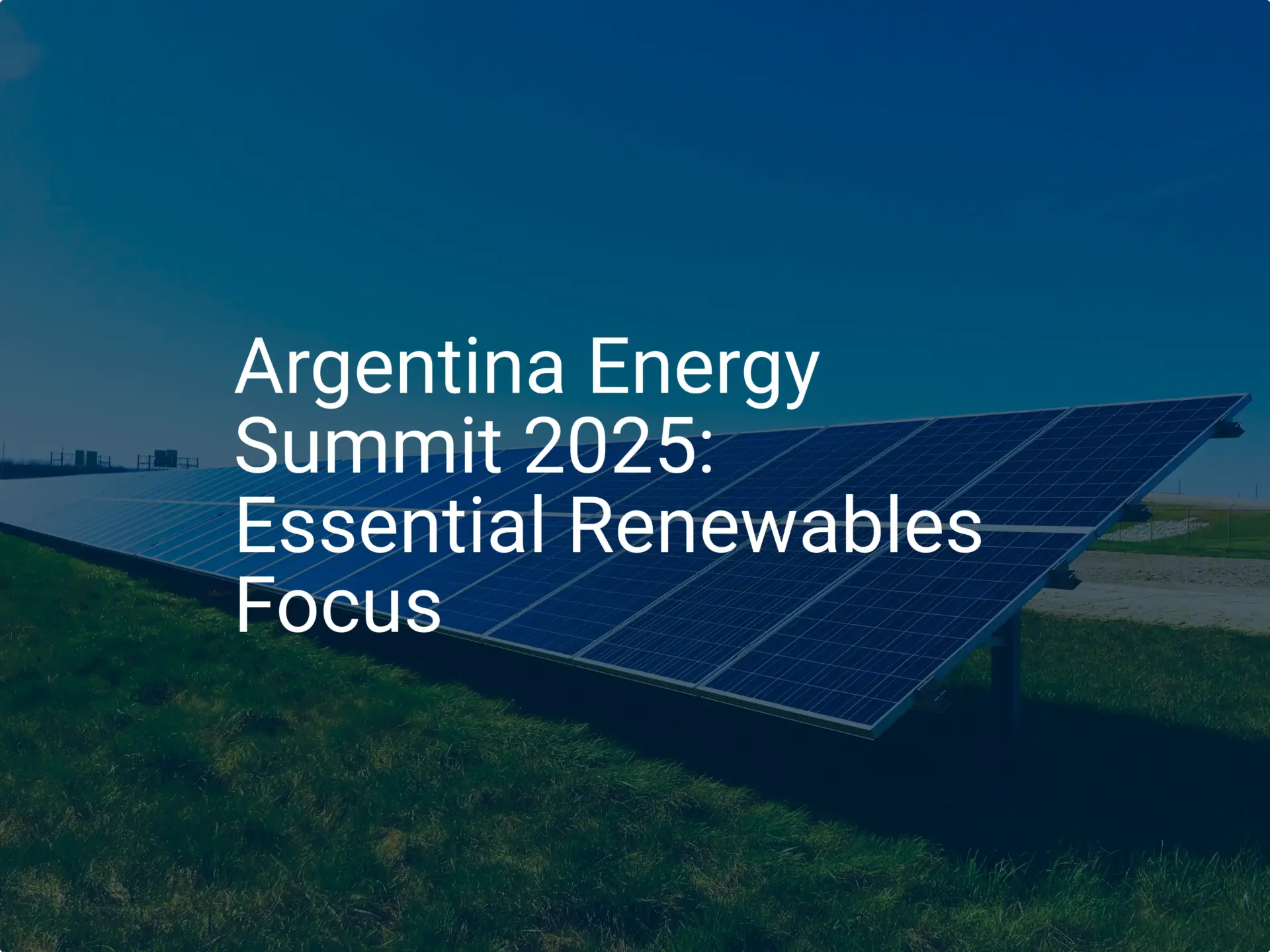Investing in Argentina’s Solar Future: A Guide to Manufacturing Opportunities & Business Climate
Argentina is at a pivotal moment in its energy transition, actively expanding its renewable capacity and reducing its reliance on traditional sources. This national drive, combined with the country’s incredible solar resources, creates a compelling landscape for investors and entrepreneurs eyeing the solar module manufacturing sector.
As the country refines its economic policies and rolls out new investment incentives, understanding the nuances of its business climate is crucial for anyone looking to establish or expand solar production in this promising South American market. This guide breaks down Argentina’s economic conditions, foreign investment frameworks, and the practicalities of doing business—tailored for those seriously considering an investment in solar module manufacturing.
Table of Contents
Argentina’s Evolving Economic & Investment Landscape
To get a real feel for Argentina’s economic environment, it’s essential to look closely at its recent performance and the government’s strategic direction. While its history has been marked by volatility, a new wave of reforms is aiming to stabilize the economy and attract foreign investment, especially in strategic sectors like renewable energy.
Current Economic Snapshot
It’s no secret that Argentina has faced significant economic headwinds, including high inflation and currency fluctuations. The government is now implementing targeted measures focused on reducing the fiscal deficit and adjusting monetary policy to foster a more predictable environment for long-term investment. These measures are already signaling confidence among energy companies, which are planning substantial investments estimated to reach $8 billion in 2025 and $9 billion in 2026-2027.
Ready to go solar?
Discover the basics with our free e-course or get tailored advice through our expert consultation services. For those seeking a comprehensive strategy, our Premium Business Plan E-Course provides an in-depth roadmap for your solar enterprise. Let us help you power up your future!
The New Foreign Investment Framework
One of the most important developments for potential investors is the introduction of new frameworks designed to encourage large-scale projects and offer greater security.
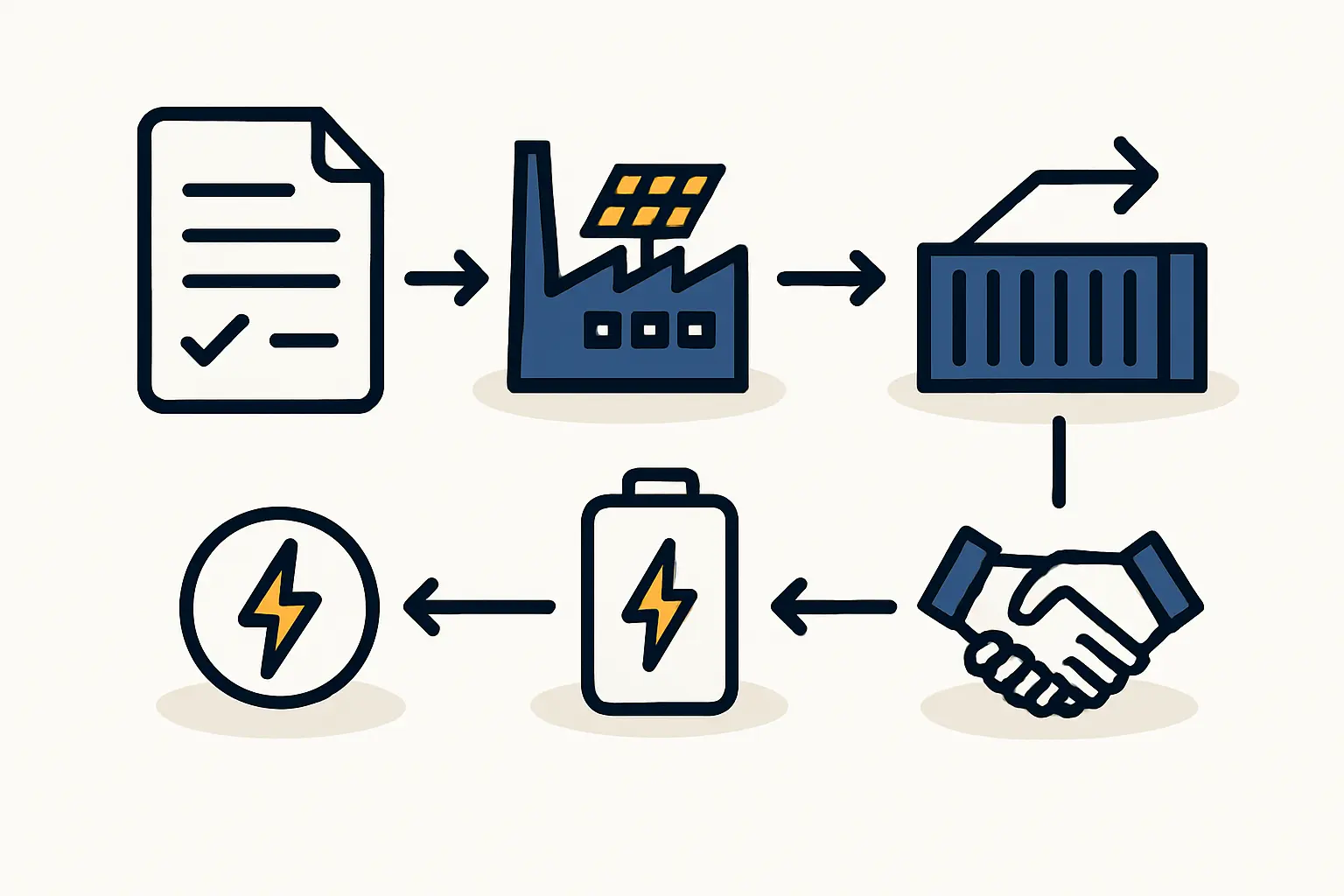
Deep Dive: RIGI (Regime of Investment and Growth Incentives)
Approved in 2024, the RIGI is a potential game-changer for significant investments, particularly for capital-intensive ventures like solar module manufacturing.
Here’s a look at the key benefits for eligible large-scale projects:
- Reduced Federal Income Tax: A welcome decrease from 35% down to 25%.
- Favorable Dividend Tax: A 3.5% tax on dividends after an eight-year period, down from the previous 7%.
- Export Tax Relief: A gradual removal of export taxes after the first few years.
- Capital Control Easing: The lifting of restrictions on loans and dividend remittances.
- Trade Facilitation: The removal of certain trade restrictions for investment vehicles.
At its core, RIGI aims to mitigate historical economic risks by providing a more stable and predictable fiscal and regulatory environment for investors.
Upcoming Citizenship by Investment (CBI) Program
Something else to keep on your radar is a planned Citizenship by Investment program, expected in late 2025 or early 2026. Investments starting from $500,000 in strategic sectors, which will almost certainly include renewable energy, could offer another interesting avenue for investment and engagement.
Overall, the message is clear: Argentina’s stance is shifting decisively toward encouraging foreign direct investment, recognizing the vital role it plays in economic growth and technological advancement.
The Argentine Solar Energy Market: A Growing Demand
Argentina’s firm commitment to clean energy is fueling a surge in demand for solar power, which in turn is creating a robust domestic market for locally manufactured modules.
National Renewable Energy Goals & Current Status
Argentina has set a national target to generate 20% of its energy from renewable sources by 2025. The country is getting close: by 2023, renewables already accounted for about 16% of the energy matrix, and in some months of 2024, they covered nearly 20% of demand.
As of late 2024, Argentina’s installed solar capacity stood at around 1.63 GW, with projections putting it near 2 GW by early 2025. Underscoring this growth, solar generation hit a record 446 GWh in November 2024, contributing significantly to the renewable output.
Market Growth & Projections
So, what does this translate to in terms of market growth? The Argentina solar energy market is projected to grow significantly, with an estimated Compound Annual Growth Rate (CAGR) of 15.9% between 2023 and 2030. The market’s value is expected to climb from $0.2 billion in 2022 to $0.6 billion by 2030.
This growth is being driven by a combination of government initiatives like the RenovAr program, a growing interest in private Power Purchase Agreements (PPAs), and rising corporate demand for green energy. The Center for Economic Analysis (CEA) estimates that approximately 700 MW of new solar and wind capacity will be added in 2025 alone.
Argentina’s Solar Potential
And let’s not forget the most fundamental ingredient: the sun. The country boasts excellent solar irradiation levels, particularly in the North-West regions (Cuyo and NOA), making it geographically ideal for solar energy generation.
Opportunities in Solar Module Manufacturing
With a growing domestic market and favorable policy shifts, establishing local solar module manufacturing facilities in Argentina is an increasingly strategic move.
Bridging the Supply Gap
So, where is the real opportunity? Right now, Latin America, including Argentina, relies heavily on imported solar panels, primarily from China. In 2023, a staggering 99% of solar panels imported into Latin America came from China. This heavy reliance creates a massive opening for local manufacturing to meet domestic demand and, potentially, to serve regional markets as well.
The San Juan Solar Panel Factory: A Case Study
A notable development on this front is Argentina’s first solar panel factory in the San Juan province. Operated by the state-owned company EPSE, it’s aiming for an initial annual production capacity of 450 MW (that’s about 800,000 panels), with plans to potentially double this output. While it will initially import solar cells from China, this project marks a crucial first step toward localizing the solar value chain and is expected to create around 110 highly skilled jobs.
Why Manufacture Solar Panels in Argentina?
- Market Access: You get direct access to a burgeoning domestic market driven by renewable energy targets, plus potential access to the broader MERCOSUR regional market.
- Cost Advantages: There are potential cost benefits under the RIGI regime and real opportunities for optimizing local supply chain logistics.
- Government Support: You’ll find increasing government backing for industrial development in strategic sectors like renewable energy.
- Local Content: A growing emphasis on using local content in energy projects can give a real advantage to domestic manufacturers.
Key Considerations for Setting Up a Manufacturing Plant
Of course, an opportunity like this requires careful planning. Here are a few key things to think about:

- Site Selection: You’ll want to consider proximity to regions with high solar potential (like San Juan or Salta), as well as access to transportation infrastructure and major demand centers.
- Technology and Equipment: Sourcing the right manufacturing technology will likely involve international suppliers. Companies like ours, PVknowhow.com, specialize in providing turnkey solar production lines and technology transfer.
- Supply Chain: It’s vital to assess the availability and cost of raw materials like silicon, glass, aluminum frames, and junction boxes. Initially, some components may need to be imported, but there is long-term potential for developing a local ancillary industry.
- Skilled Labor: You’ll need to ensure the availability of a skilled workforce and be prepared to implement training programs. The San Juan factory highlights the potential for creating valuable, specialized jobs.
Navigating the Business Climate: Ease of Doing Business for Manufacturers
Now, let’s talk about the on-the-ground realities of operating a manufacturing business in Argentina. Understanding these practicalities—from legal frameworks to the Argentina plant asset management market—is key to success.
Regulatory and Legal Framework
- Business Registration and Licensing: This involves the usual procedures for establishing a legal entity and securing the necessary business licenses.
- Permitting for Industrial Operations: Specific permits are required for manufacturing facilities, including environmental impact assessments and operational authorizations.
- Environmental Regulations: Compliance with both national and provincial environmental laws is, of course, mandatory.
- Let’s be candid: historically, Argentina has been a complex place to do business. However, new initiatives like RIGI are specifically designed to streamline processes for large investors.
Taxation for Manufacturers
Profitability often hinges on a clear understanding of the tax landscape:
- Corporate Income Tax: The standard rate is 35%, but the RIGI framework offers a reduction to 25% for eligible projects.
- Value Added Tax (VAT): Standard VAT applies, but there may be provisions for early refunds or accelerated depreciation for investments in renewable energy.
- Export/Import Duties: RIGI provides significant relief from export taxes and can streamline the import process for capital goods and raw materials.
Labor Laws and Employment
Argentina has comprehensive labor laws, and it’s essential for employers to navigate them correctly. While they provide strong worker protections, these regulations can also be perceived as rigid, making a thorough understanding of them vital for effective workforce management.
Infrastructure
- Logistics: Argentina has a network of roads, railways, and ports, but logistical efficiency can vary quite a bit by region. Reliable transport for importing raw materials and distributing finished modules is essential.
- Energy Infrastructure: Access to stable and competitively priced electricity is crucial for powering a manufacturing operation. While Argentina is expanding its renewable generation, transmission infrastructure remains a challenge in some areas.
Protecting Intellectual Property
Argentina has laws to protect intellectual property rights and is a member of WIPO. That said, enforcement can sometimes be a concern, making robust legal counsel a very wise investment.
Challenges and Risk Mitigation
No guide would be complete without a realistic look at the challenges. While the opportunities are significant, potential investors must plan for the risks.
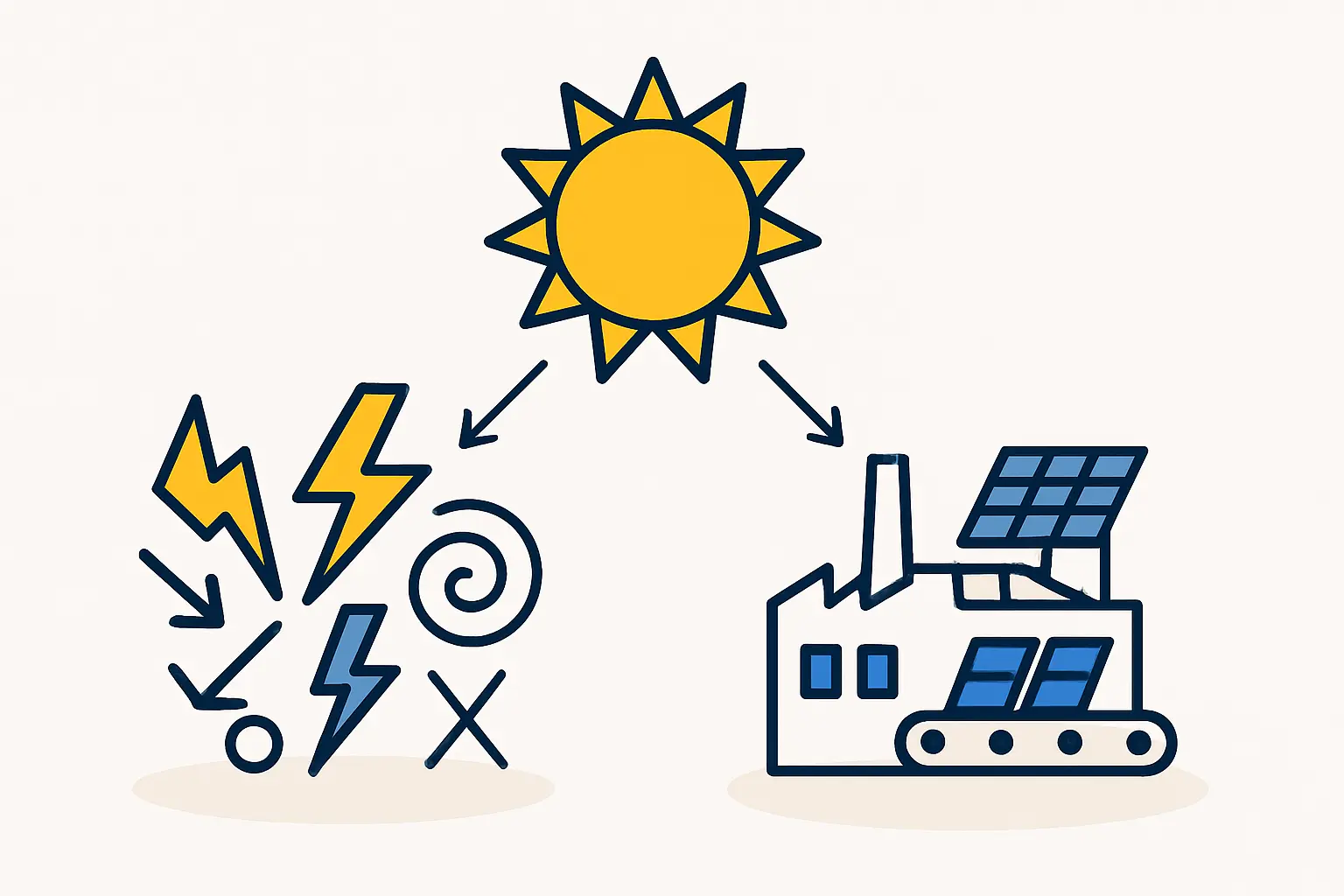
Economic Volatility
- Challenge: Historically high inflation and currency fluctuations can impact project costs and returns.
- Mitigation: The RIGI framework is designed to provide stability clauses on taxation and capital controls for qualifying large investments. Beyond that, sound financial planning and hedging strategies are crucial.
Infrastructure Deficiencies
- Challenge: Outdated or insufficient electricity transmission infrastructure can be a bottleneck for large-scale energy projects and power-intensive manufacturing. Logistical hurdles can also exist in less developed regions.
- Mitigation: Choose your site carefully based on existing infrastructure. It may also be worth advocating for or even participating in infrastructure development initiatives.
Bureaucracy and Red Tape
- Challenge: Administrative hurdles and bureaucracy can lead to delays.
- Mitigation: Engaging experienced local consultants and legal advisors who know the system can help you navigate these processes smoothly. Initiatives like RIGI also aim to simplify procedures for major investments.
Access to Financing and High Cost of Capital
- Challenge: Obtaining financing at competitive rates can be difficult in Argentina, often due to perceived economic risks and a high cost of capital.
- Mitigation: It’s advisable to explore international financing options, partnerships, and fully leverage the incentives provided under schemes like RIGI.
Competition from Global Players
- Challenge: You’ll be up against established international manufacturers, particularly from Asia, who have significant economies of scale.
- Mitigation: The key is to focus on local market needs, leverage local manufacturing incentives, build strong local partnerships, and compete on quality and service.
Conclusion: Partnering in Argentina’s Solar Transformation
Argentina’s deep commitment to renewable energy, combined with its natural solar advantages and new investment incentives like RIGI, is creating fertile ground for solar module manufacturing. While challenges tied to economic stability and infrastructure persist, the strategic push toward local industry and sustainable energy offers a compelling long-term vision.
For entrepreneurs, companies, and investors ready to enter this market, the path forward requires careful planning, a deep understanding of the local context, and leveraging all available support. The potential to contribute to Argentina’s energy independence, create skilled jobs, and tap into a growing regional market makes solar manufacturing a strategic opportunity.
At PVknowhow.com, we live and breathe the complexities of establishing solar module production lines. With over two decades of hands-on experience, we offer end-to-end solutions—from turnkey production equipment and business planning to technical consulting—guiding clients through every stage of building and operating a solar factory. If you are exploring solar manufacturing in Argentina, our expertise can help you turn your concept into a successful, operational facility.



